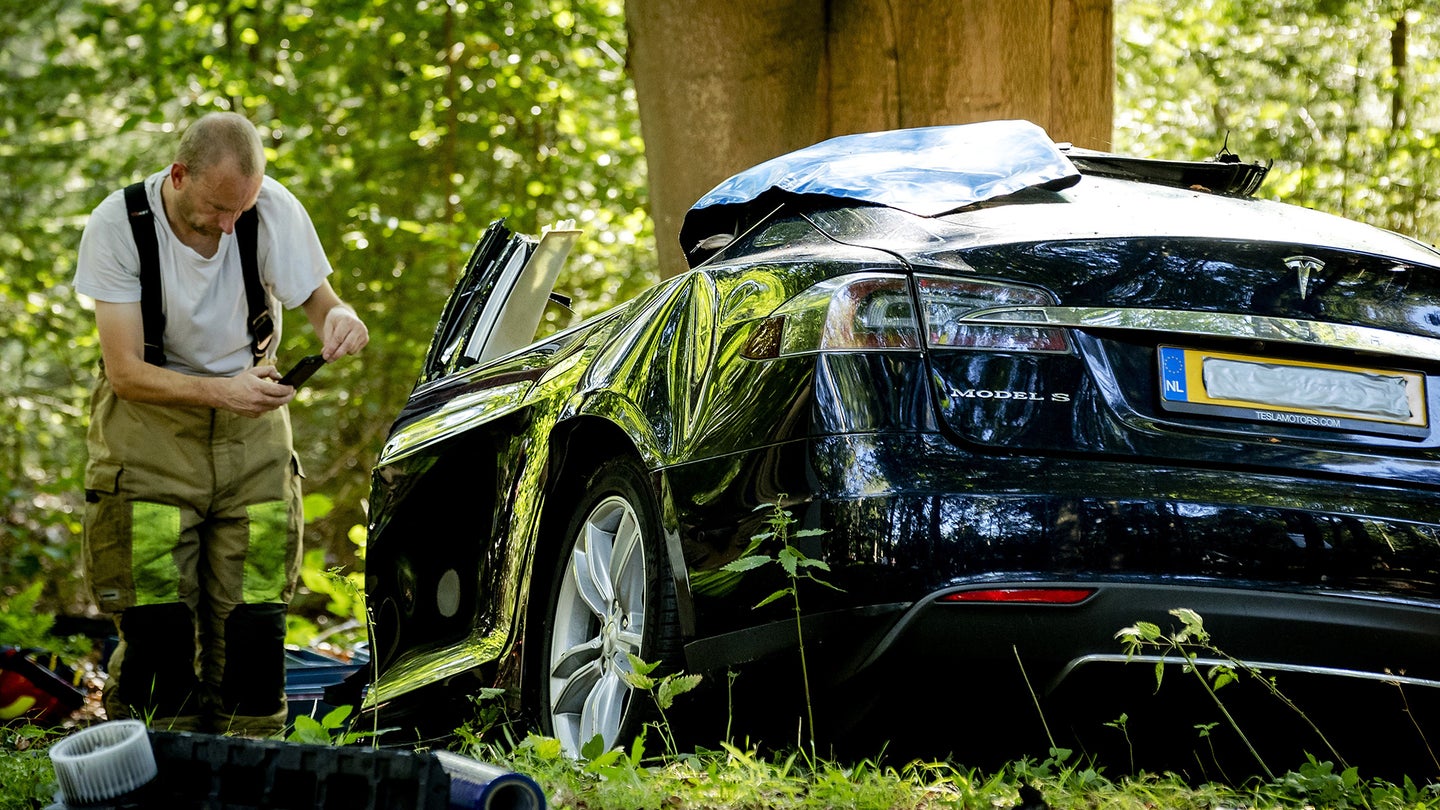Another Tesla Owner Blames Autopilot for Model S Roll-Over Crash
After a weekend crash in Minnesota, a Tesla owner blames his Model S’ autopilot feature for causing an accident.

This isn't the first time a Tesla has gotten into an accident, nor will it be the last. One not-so-surprising detail that happens to accompany many of these accidents is that autopilot was reportedly engaged at some point before the accident occurred. This particular accident does not stray from that pattern, as a driver claims his Model S lost control after having autopilot activated in his 2016 Tesla Model S.
Over the weekend in Kandiyohi County, Minnesota, a Model S ended up on its roof in a marsh with a driver and four other occupants in the car according to reports made by a local news station. Everyone made it out safe and sound, thankfully only sustaining minor injuries. What happens to be interesting about this particular crash is that the owner is reportedly blaming his Model S' autopilot feature for causing the accident altogether. The accident occurred at a "T" intersection where the Tesla would have needed to make either a left or right turn. The vehicle then reportedly veered off of the road and flipped over into the marsh.
We are glad the driver and passengers are safe. We are working to establish the facts of the incident and have offered our full cooperation to the local authorities. We have not yet established whether the vehicle’s Autopilot feature was activated, and have no reason to believe that Autopilot, which has been found by NHTSA to reduce accident rates by 40%, worked other than as designed. Every time a driver engages Autopilot, they are reminded of their responsibility to remain engaged and to be prepared to take immediate action at all times, and drivers must acknowledge their responsibility to do so before Autopilot is enabled.
As of yet, it seems that Tesla has not been able to retrieve any data from the crash. It is unknown if this is due to the severity of the crash, or outside factors of the company physically being able to retrieve the data. The company's spokesperson feels confidently that Autopilot is not to blame, much like it has in several other of its findings after crashes involving its vehicles.
It is important to understand that Tesla has only released Level 2 autonomy in its vehicles, meaning that the driver must still be actively aware of their surroundings and keep their hands on the wheel to interact with the road if conditions that the autopilot deeps appropriate are indeed incorrect. It seems that the driver believes that he was unable to recover from autopilot's mistakes and the collision occurred.
For now, details are scarce, but updates may become available if and when Tesla is able to recover and analyze the data from the collision.
